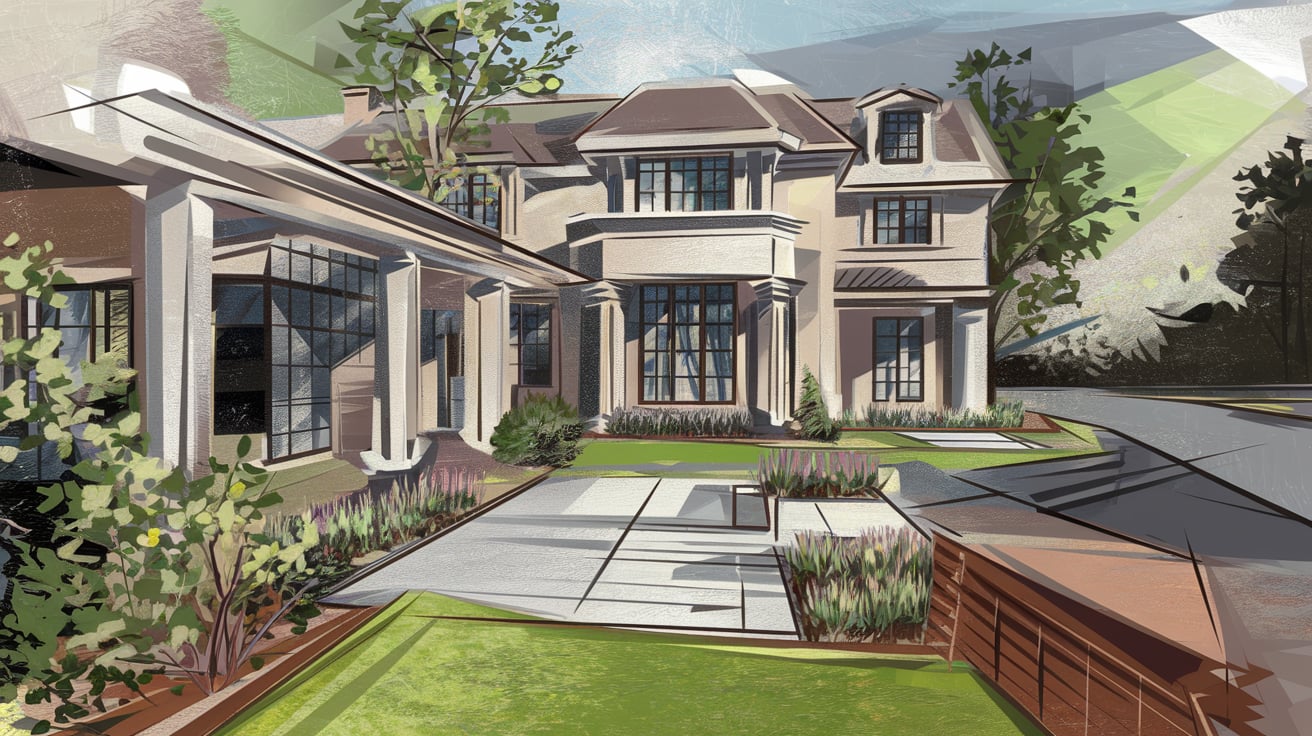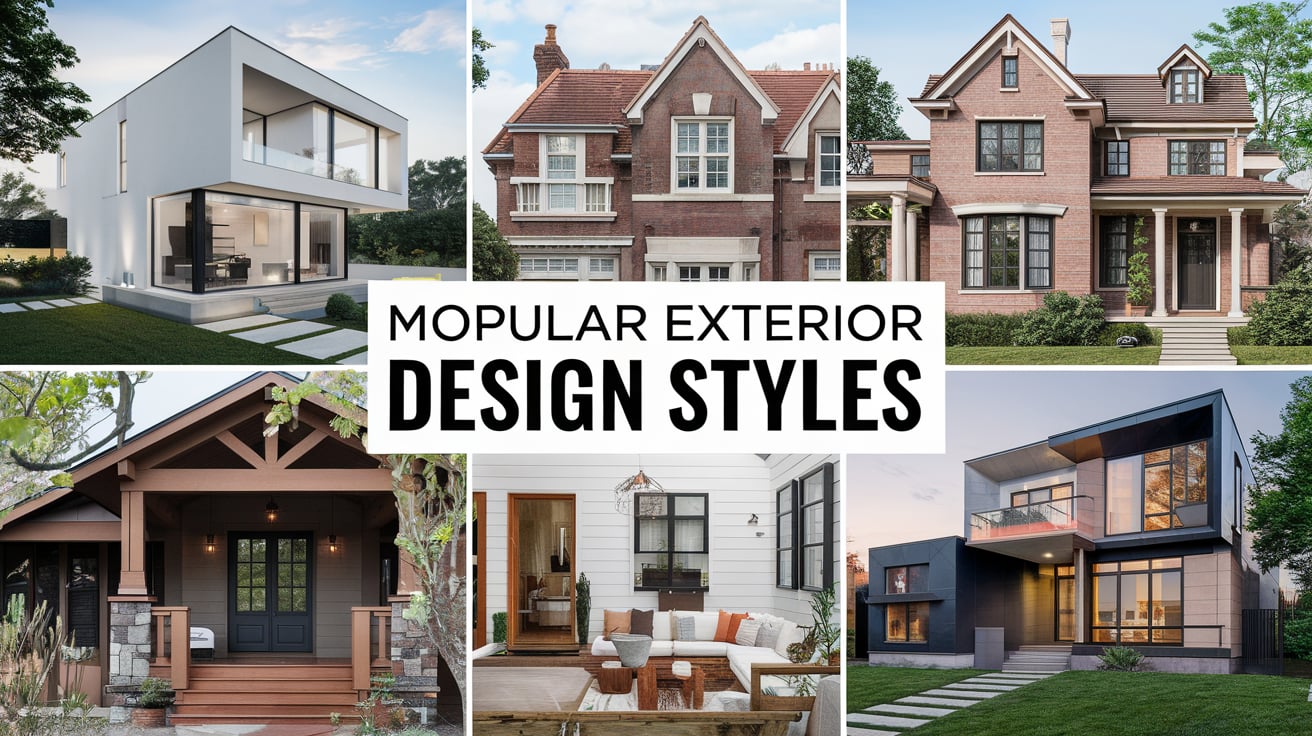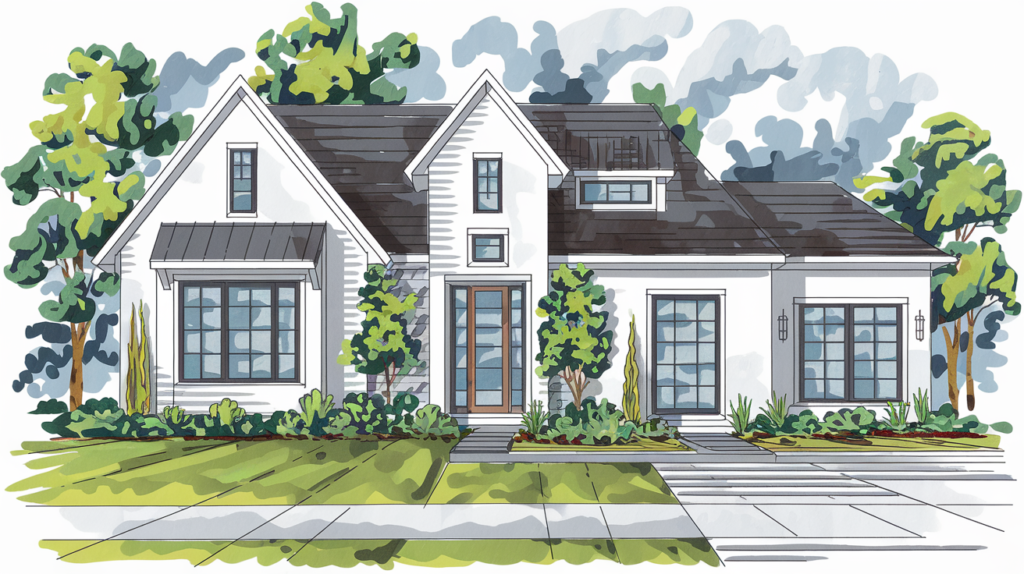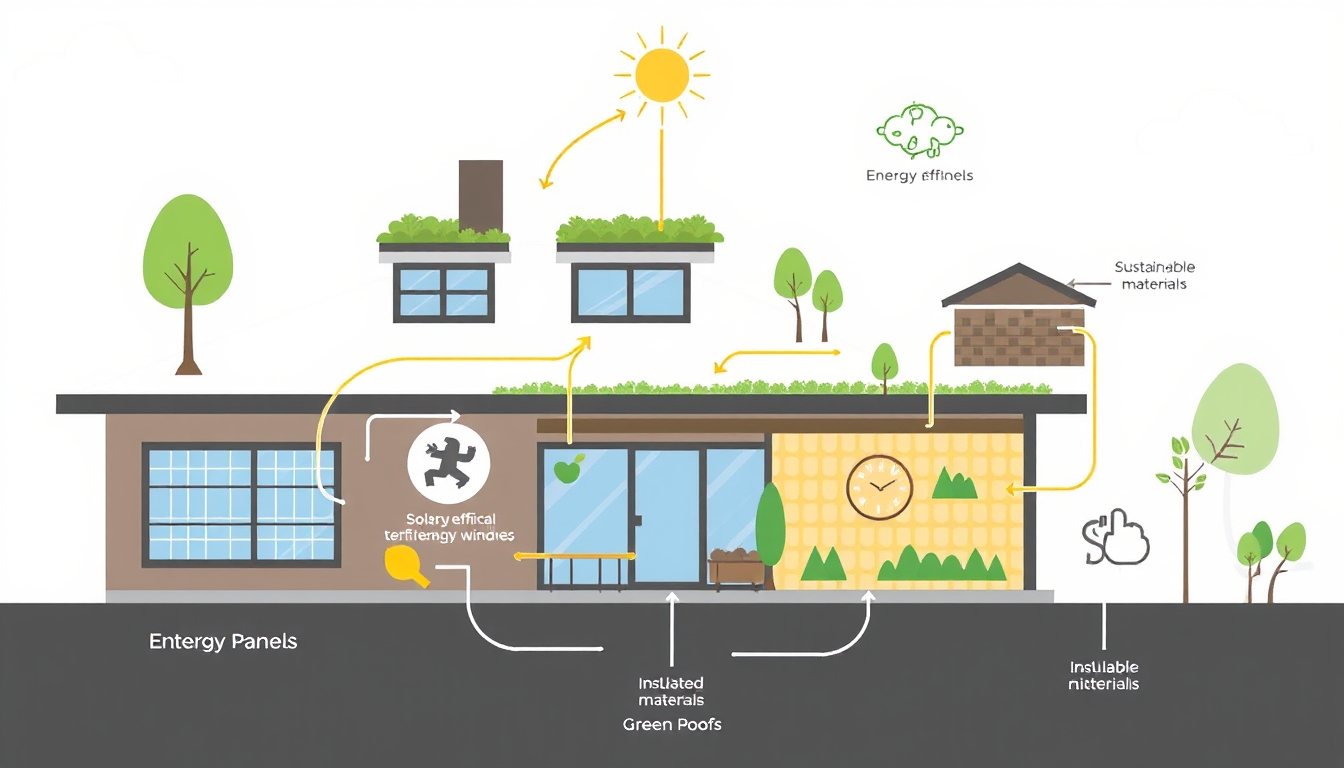When it comes to creating a lasting first impression, nothing speaks louder than the exterior design of your home. Whether you’re building a new home or upgrading an existing one, exterior design is a critical component that sets the tone for your property. It encompasses everything from the façade and landscaping to outdoor lighting and architectural elements.
In this guide, we’ll explore the key elements of exterior design, discuss various trends and styles, and offer practical tips on how you can enhance your home’s curb appeal while ensuring it remains functional and sustainable.
Why Exterior Design Matters
The exterior of your home is more than just a pretty face. It’s the first thing people notice and can significantly impact the value of your property. A well-designed exterior not only boosts curb appeal but also enhances the functionality, energy efficiency, and overall experience of your outdoor space. Here’s why exterior design is so important:
- First Impressions: A home’s exterior is what visitors and potential buyers see first, making it a crucial factor in creating positive impressions.
- Increased Property Value: An attractive, well-maintained exterior can significantly increase your home’s market value.
- Functionality: Good exterior design maximizes the usability of your outdoor space, from providing comfortable living areas to ensuring proper drainage.
- Energy Efficiency: Strategic design choices, such as insulation and window placement, can contribute to your home’s energy efficiency, lowering utility costs.
- Aesthetic Appeal: Exterior design reflects your style and enhances your home’s character.
Key Elements of Exterior Design

Designing the exterior of a home involves various components working together to create a harmonious, functional space. Here are the main elements to consider:
- Façade: The front of your home sets the overall aesthetic. Key aspects include materials, textures, and color schemes.
- Roofing: The roof is not just functional, protecting your home from the elements, but it also plays a key role in defining your home’s style. From shingles to metal roofing, your choices impact durability and appearance.
- Windows and Doors: Windows allow natural light to flood the home while enhancing energy efficiency. The front door, often the focal point of the exterior, is an opportunity to showcase personal style.
- Outdoor Spaces: Patios, decks, and porches extend your living space outdoors, creating areas for entertainment and relaxation.
- Landscaping: The design of your garden, trees, and pathways should complement your home’s architecture and enhance its visual appeal.
- Exterior Lighting: Lighting is not only important for safety but also adds a dramatic effect, illuminating architectural features and pathways.
- Driveway and Pathways: These elements should be functional yet aesthetically pleasing, guiding visitors to your front door.
Let’s dive deeper into how you can bring these elements together to create a cohesive and beautiful exterior design.
Popular Exterior Design Styles

When choosing an exterior design style, consider your personal preferences, the architectural style of your home, and the surrounding environment. Here are some popular exterior design styles that can elevate the look of any property:
- Modern: Clean lines, minimalism, and large windows define modern exterior design. This style often incorporates materials like glass, steel, and concrete to create a sleek, contemporary look.
- Traditional: Classic and timeless, traditional design features elements like brick, wood, and stone. Symmetry, shutters, and gabled roofs are common characteristics of this style.
- Mediterranean: Drawing inspiration from Spanish and Italian architecture, Mediterranean exteriors often feature stucco walls, red-tile roofs, and ornate ironwork. Warm, earthy colors dominate this style.
- Cottage: Quaint and charming, the cottage style embraces natural materials like stone and wood. Details like window boxes, pitched roofs, and arched doorways give this style a cozy appeal.
- Craftsman: Known for its attention to detail and handcrafted elements, Craftsman-style homes feature exposed beams, large front porches, and a mix of stone and wood materials.
- Farmhouse: Modern farmhouse design blends rustic charm with contemporary elements. Expect to see metal roofs, wooden beams, and clean lines combined with vintage-inspired fixtures.
- Colonial: Inspired by European architecture, Colonial homes are typically symmetrical with simple, rectangular shapes. Brick and wood are common materials, and the design often includes columns and shuttered windows.
Each style brings its personality and charm. The key is to choose one that resonates with you and complements the surroundings.
Exterior Design Trends for 2024
Staying current with design trends can help you keep your home’s exterior looking fresh and appealing. Here are some of the top exterior design trends for 2024:
- Sustainable Materials: With growing awareness of environmental concerns, sustainable materials like reclaimed wood, recycled steel, and eco-friendly insulation are gaining popularity. Using these materials reduces your carbon footprint while giving your home a unique aesthetic.
- Dark Exteriors: Darker shades like charcoal, deep green, and navy blue are replacing traditional lighter colors. These bold tones give homes a modern, sophisticated look and help highlight landscaping and architectural details.
- Outdoor Living Spaces: Homeowners are increasingly expanding their living areas to the outdoors. Covered patios, outdoor kitchens, and fire pits are becoming essential parts of exterior design, providing spaces for year-round enjoyment.
- Mixed Materials: Combining materials like wood, stone, and metal can create a visually dynamic exterior. For instance, pairing rustic wood with sleek steel elements can add texture and depth to your home’s façade.
- Energy-Efficient Windows: Large, energy-efficient windows are trending, allowing for more natural light while reducing energy consumption. These windows often feature double or triple glazing for better insulation.
- Green Roofs and Vertical Gardens: As green living gains popularity, many homeowners are incorporating vegetation into their exteriors. Green roofs, which are partially or completely covered with plants, help regulate temperature, reduce energy costs, and promote biodiversity.
- Textured Finishes: Exterior walls are no longer limited to smooth finishes. Textured surfaces like stucco, concrete, and stone cladding add dimension and visual interest to a home’s exterior.
By incorporating these trends, you can ensure that your home looks up-to-date and reflects modern sensibilities while remaining functional.
Practical Tips for Enhancing Exterior Design

Here are some practical tips to help you improve the exterior design of your home, whether you’re embarking on a full remodel or just making small updates:
- Focus on Symmetry: Symmetry is aesthetically pleasing and easy on the eyes. Achieve balance by placing windows, doors, and landscaping elements symmetrically for a more cohesive design.
- Choose the Right Color Palette: The color palette sets the mood of your exterior. Neutrals like gray, beige, and white create a classic look, while bolder shades like black or navy make a modern statement. Always consider how the colors will look under different lighting conditions.
- Upgrade Your Front Door: The front door is the focal point of any home. A bold color or unique material, like stained wood or glass, can make your entryway more inviting.
- Maintain Your Landscaping: Well-maintained landscaping is essential for curb appeal. Prune bushes, mow the lawn, and add seasonal plants for a polished look. Incorporate native plants to minimize water usage and maintenance.
- Install Outdoor Lighting: Lighting is often overlooked in exterior design, but it plays a crucial role. Install lights along walkways, near the entryway, and around key landscaping features to enhance safety and aesthetics at night.
- Consider Roofing Materials: Your choice of roofing material can dramatically affect the look and longevity of your home. Asphalt shingles are a budget-friendly option, while metal roofs provide durability and a modern appearance.
- Incorporate Texture: Add texture to your exterior with different materials. Stone walls, wooden siding, and brick can all add richness and depth to your design. Mixing textures creates a dynamic and visually interesting exterior.
- Add Greenery: Vertical gardens, potted plants, and trees can soften the look of your exterior and bring a natural, welcoming feel to your space. Plants are not only aesthetically pleasing but also environmentally beneficial.
- Ensure Functionality: Always prioritize functionality when making design decisions. Ensure that pathways, driveways, and outdoor spaces are not only beautiful but also practical and easy to use.
Energy Efficiency in Exterior Design

Incorporating energy-efficient features into your exterior design can save you money and contribute to environmental sustainability. Here are some energy-saving ideas to consider:
- Energy-Efficient Windows: Invest in double or triple-glazed windows to improve insulation and reduce heating and cooling costs. Look for windows with low-emissivity (Low-E) coatings to minimize energy loss.
- Insulation: Proper insulation is key to maintaining a comfortable indoor temperature. Insulate walls, roofs, and even foundations to prevent heat loss in the winter and keep your home cool in the summer.
- Cool Roofs: Cool roofs reflect more sunlight and absorb less heat than standard roofs, which can reduce energy bills and improve comfort in warm climates. Look for ENERGY STAR-rated roofing materials to increase your home’s energy efficiency.
- Solar Panels: Adding solar panels to your roof is a great way to harness renewable energy and lower your electricity bills. Many governments offer incentives or tax credits for installing solar panels, making them a smart investment for energy-efficient homes.
- Energy-Efficient Doors: Exterior doors, especially those made of steel or fiberglass, are great for insulation. These doors are built to prevent air leaks, keeping your home comfortable and reducing energy usage.
Conclusion: Create a Lasting First Impression with Exterior Design
Exterior design is an essential part of creating a welcoming and functional home. By focusing on the right materials, colors, and architectural elements, you can elevate the curb appeal of your property while ensuring it remains energy-efficient and sustainable. Whether you’re aiming for a modern, traditional, or eclectic style, your home’s exterior should reflect your taste and meet your practical needs.
By staying informed about current design trends and considering key elements like landscaping, roofing, and energy efficiency, you can ensure that your home stands out in all the right ways.

